If I asked you to say the first plant that comes to mind when you think of Japan, chances are you'd say sakura, cherry blossoms. Sure, they are pretty and they represent the fragility of the human condition and stuff, but I have another much cuter Japanese plant to show you today!
Algae Balls!
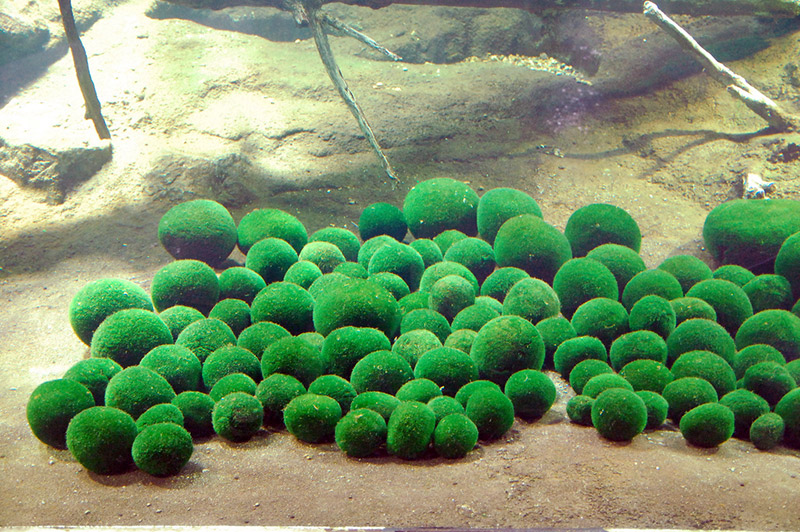
These little guys are called marimo. Aren't they cute? So round! So green! Don't you just want to touch them? Well I have touched them and I can tell you they feel great. They are all soft and slightly squishy, a bit like wet velvet. marimo 毬藻 literally means "ball water plant". That's pretty straightforward. They are a species of algae that naturally forms into balls.
The conditions needed to form marimo are incredibly rare. They are only found in Iceland, Scotland, Estonia, and Japan. In Japan they mainly live in Lake Akan, in east Hokkaido. The lake has shallow shores, so it provides the conditions needed to form the algae. Essentially they are just the same as algae you see growing on rocks, except they are free floating. As they grow, they roll down deeper into the lake. This rolling is what gives them their spherical shape. Once they get too deep for the sunlight to reach them they break up and float back to shore. Then they begin their rolling again.
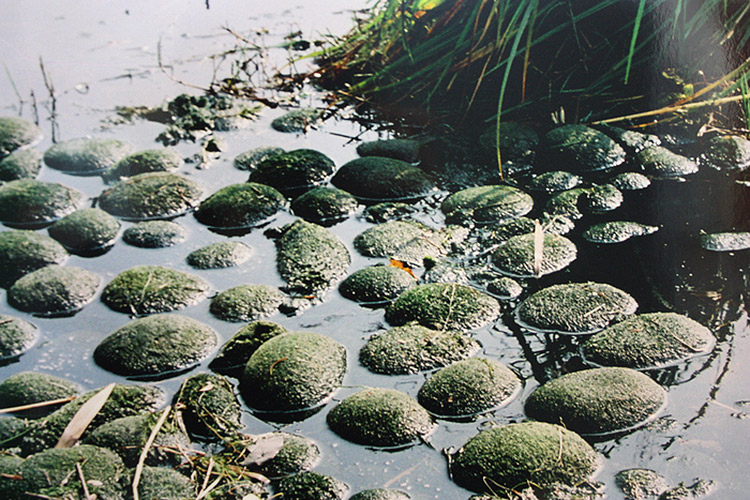
Another interesting trick they can do is floating up and down by themselves. As they photosynthesize they rise and fall in the water. This is why they are sometimes called floating moss balls, even though they are not moss at all. Their scientific name is Aegagropila linnaei. They are also called Cladophora balls or Lake balls. In Hokkaido's native Ainu language they are called torasampe (marsh monster) and tokarip (marsh ball). Whatever you call them, they are adorable balls – adoraballs!
Marimokkori and his… Algae Bulge
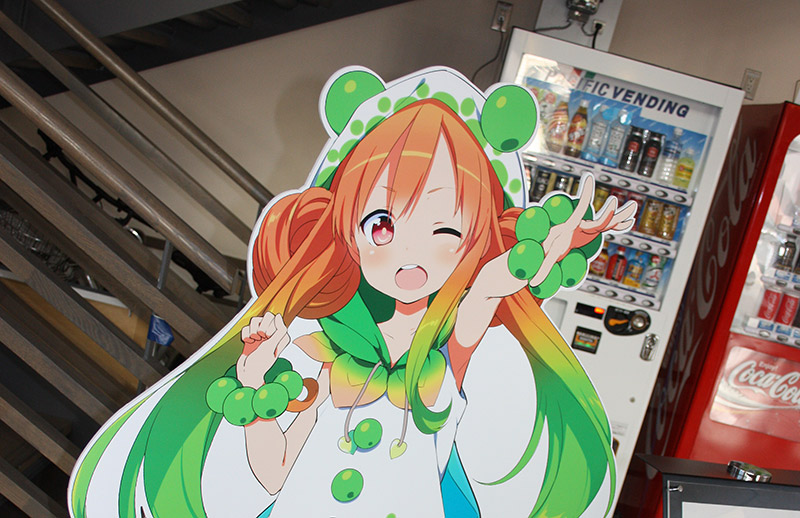
Marimo's charm lies in its simplicity. A green ball is a simple icon to turn into all manner of cute goods. You can get all sorts of fluffy green round things to commemorate your trip to Akan, and any number of cute algae balls with faces. Since 2013 the Akan Ryokan Association has been promoting itself with a classic anime style girl Mizumori Amane, who is covered in algae balls. There is even a kind of marimo jelly. You pierce the plastic skin with a pin and suck the insides out.
But this is Japan, where sometimes cute gives way to creepy. One algae character stands out (quite literally) from the rest.
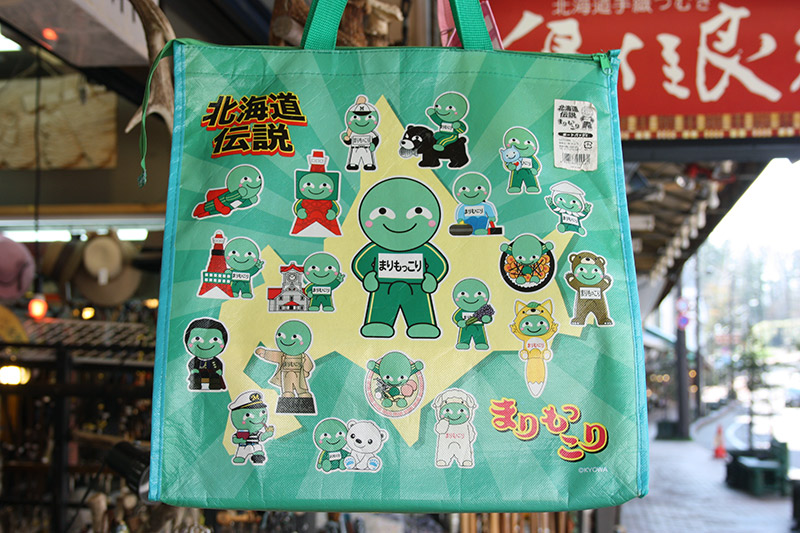
This is Marimokkori. His name is a pun, combining the word marimo with the word mokkori. Makkori モッコリ is the Japanese onomatopoeia for something rising under cloth. As you can probably guess from the picture above, I'm being rather delicate with my phrasing. Japan does love a good pun.
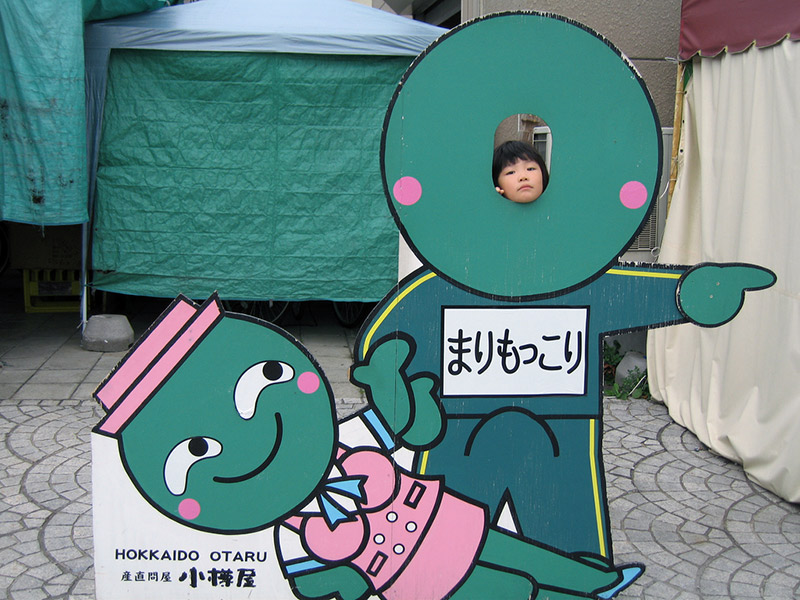
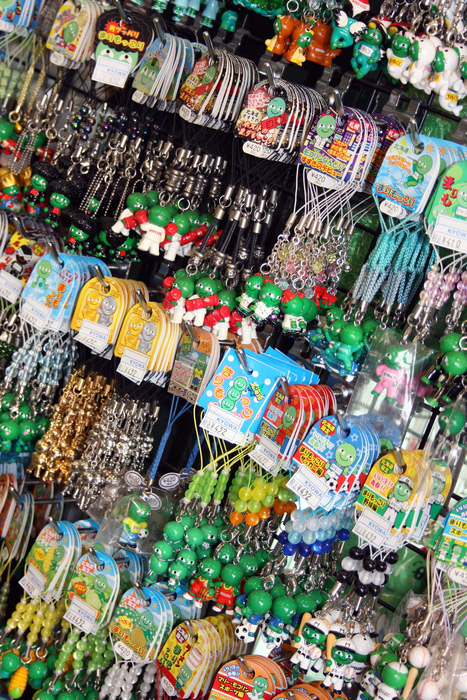
Marimokkori is easily Japan's creepiest mascot. It's not just his… bulge. It's that super creepy smile that goes with it. What's more, he's not restricted to the adult market. Where you find Marimokkori you will often find kids being amused by him. It's hard to imagine a character like him being marketed to children outside of Japan. That said, Japanese people aren't completely blasé about Marimokkori and his round green part. Whether the tourists are Japanese or foreigners the reaction most people seem to have when first encountering Marimokkori is, "???!" followed by laughter.
When he was first introduced in 2005, some people thought the character was a little bit too happy to see them. Several hotels in Hokkaido refused to sell Marimokkori goods in their souvenir shops. These days, he has growing acceptance and appears in many forms; phone straps, boxer shorts, baby clothes, a soft toy where you pull his part that resembles an alage ball and he shakes. He has an evil alter-ego Warimokkori. He has a girlfriend who has her bulges in two different places. He has a twitter account. He has a blog. If you live near Sapporo, you can request Marimokkori to come to your old people's home or elementary school to "bother you." Marimokkori is on the rise.
The Marimo Blessing
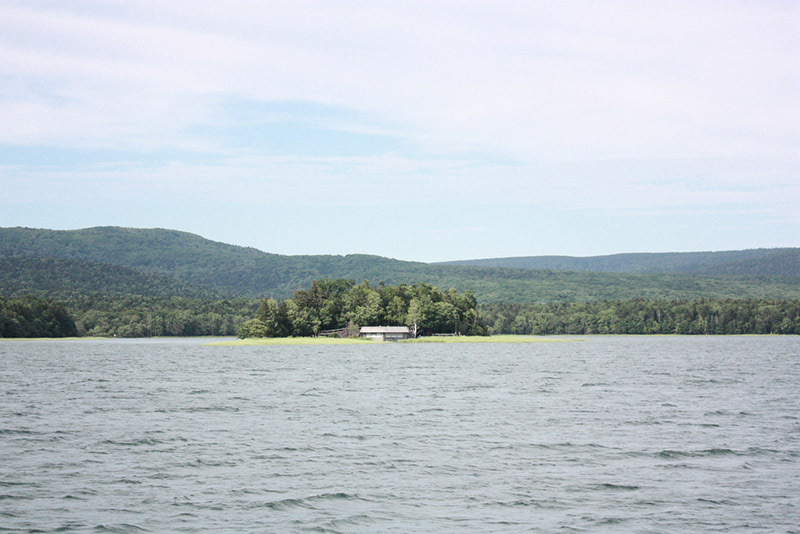
Marimo have been popular for a long time before Marimokkori came on the scene. That popularity has been a mixed blessing. At first it hurt the algae balls. Later it helped them and started one of Japan's first natural heritage conservation movements.
Our algae friends were designated a Japanese National Treasure in 1921. This actually led to a massive decrease in their wild population as many were removed from their homes and sold to tourists who were now interested in the newly popular spheres. In Tokyo they could fetch prices of around 1000 yen, approximately US$6,165 in today's money. The marimo in Lake Akan suffered further as logging and the creation of a nearby power plant diverted streams that fed their watery home. The water levels of Lake Akan dropped dramatically and many were left exposed to die on the shore. The power plant at Akan provided the majority of the electricity for East Hokkaido. It was considered a necessary evil until spring 1950, when the plight of the dehydrated algae was brought to public attention by photos of hundreds of dead marimo.
One of Japan's first conservation projects was started. The heart of this was the return of the souvenir algae pets to their natural home. From all across Japan, people returned the algae they had bought back to Lake Akan. By the time of the first festival, 48 were ready to be returned to the lake. In honor of these people's generosity the first Marimo Festival was held on October 7th 1950, with a ceremony to mark their homecoming. The festival is still held every October. It involves three ceremonies arranged by the local Ainu people of Akan-kohan, as well as talks on conservation.
However, the connection between the Ainu and the algae balls is contentious. For the Ainu of Lake Akan, the Marimo festival draws a large number of tourists. Ainu communities in other areas of Hokkaido have been critical of the festival, pointing out that there are no records or legends connecting respect for the algae balls with the Ainu. Indeed, they were a nuisance, getting caught in fishing nets.
One of the "Ainu" legends about the marimo is not passed down by the Ainu themselves, but only by tour guides. It says that the origin of the algae balls was an Ainu girl who drowned herself in the lake after her love affair ended badly. Her body became the algae balls. This kind of dramatic and romantic legend does seem to have been designed to appeal to tourists.
The Ainu community at Akan has argued back against criticisms that the festival is only a tourist attraction. Mr Tasuke Yamamoto, one of the priests involved in the first returning of the marimo ceremony, said,
There is nothing wrong in creating festivals, just because they didn't exist from ancient times. Ancient people made up ceremonious events because they had something important to pray for, which we have surely inherited over a long period of time. As for the Marimo Festival… At first, it was a simple concept of doing a ceremony for the-returned aegagropilas [marimo] to send them back into the lake. But I said, if we are doing it at all, we should respect Ainu worship toward nature, and show gratitude to the "great nature."
The Marimo Festival is part of the complicated relationship Hokkaido has with its native people. The issues of tourism, Ainu spirituality, and conservation all intersect here. If you want to delve deeper into these issues this paper by Irimoto Takashi, published in 2004, is a good starting place.
Where to find your own Marimo
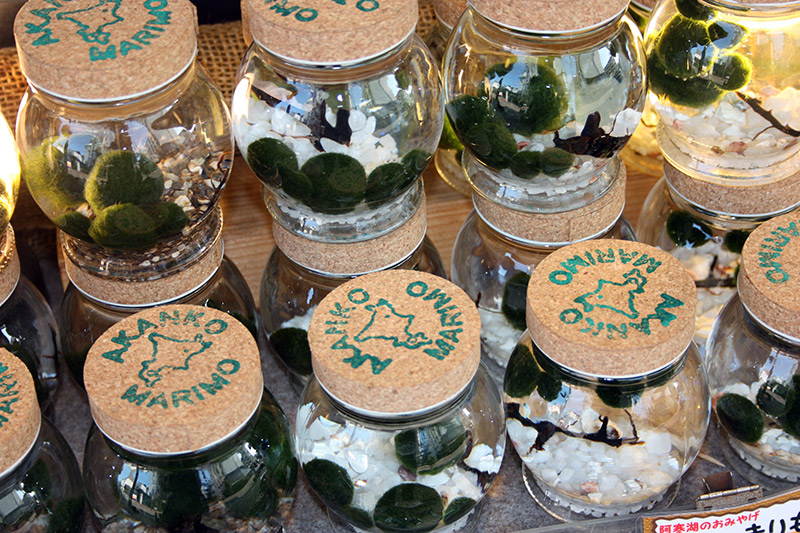
These days the souvenir marimo business is still going strong. However, now the algae balls you'll find on sale in Hokkaido and elsewhere are artificially rolled from free floating filaments, not the natural kind. Their sale is monitored by the Hokkaido Fisheries Commission, so that the natural ones can live in peace, while we can still enjoy their non-wild cousins. The sale of some (though not all) helps fund conservation projects.
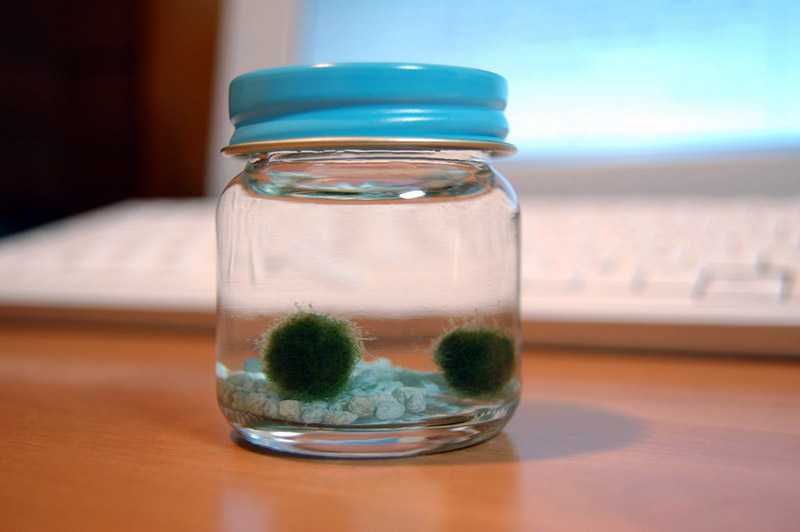
If you visit Akan, you can pick up a marimo from any one of the souvenir shops or lakeside vendors. Even if you don't venture all the way to Akan, you'll find them in souvenir shops all over Hokkaido. Be aware that taking them back home if you don't live in Japan may be tricky as they are living plants and could pose a biohazard. You might have better luck with a set of dried starter kit algae, which are usually sold alongside their damper cousins.
Luckily, you can also get your own little algae friend from aquarium shops in many countries. They will sometimes be sold under the name "Moss balls." You can also find them at major pet shop or garden center chains. In recent years the price has dropped from around US$20 to about US$8. They are also available in a range of adorably quirky containers on Etsy.
Watch out for knockoffs, which are just plastic balls with a thin layer of algae. True marimo are algae through and through and if properly cared for will last a lifetime or more.
How to care for your Marimo
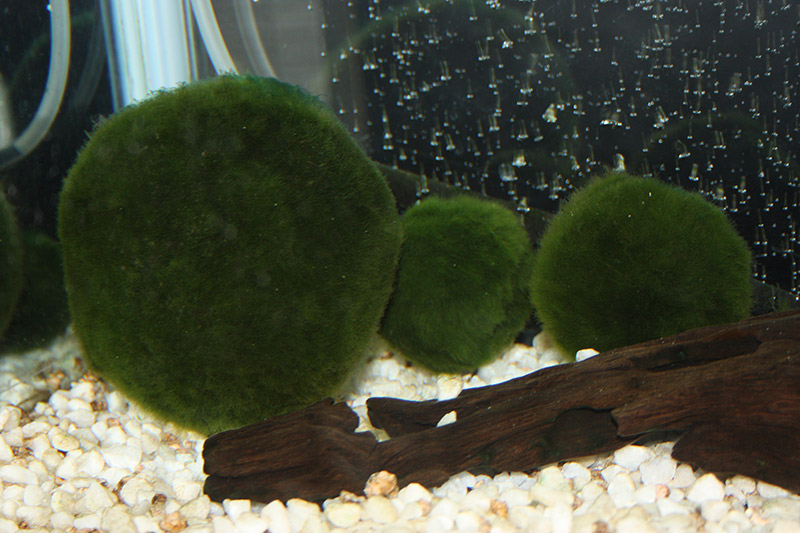
Good news! Marimo are almost impossible to kill! Sakura are beautiful for a few days, but a these ball-tastic friends will be your plant companion for life. They don't ask for much, just water to roll around in so they can get sun on all sides. They don't like bright sunlight (they come from the murky lake bottom remember), so you can easily keep them indoors. They don't like chlorine, so keep them in filtered water, or tap water that has been left to stand for a couple of days. You should change their water every few weeks to keep them cheerful.
If your algae ball starts to turn brown on one side, just roll it over so that it can get some sunlight all over. Many are sold in round containers in Japan, so that that can be easily swirled around now and then. If the discoloration continues, add a little salt and ice to the water. Marimo don't mind a little bit of salt. This remedy should have your ball friend looking adorable again in a few days.
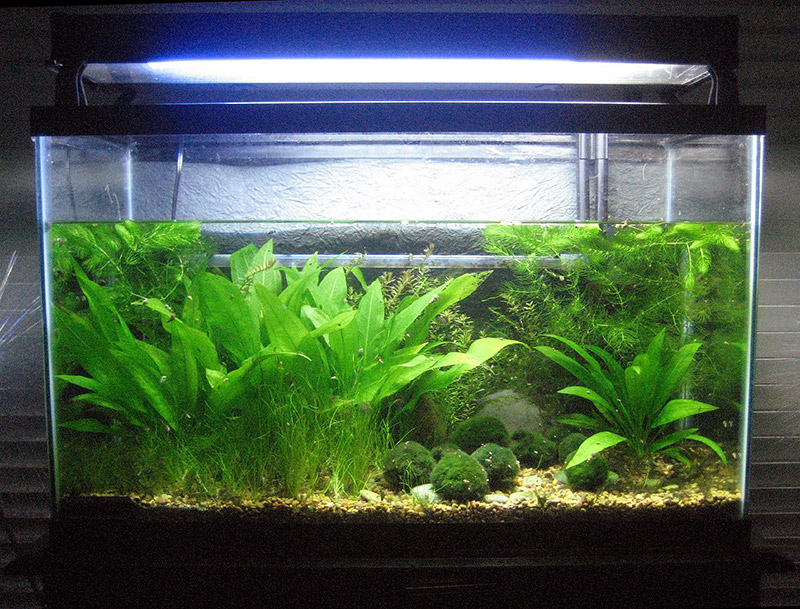
They are fish safe. Some fish, such as bettas, have even been known to play football (finball?) with marimo. Watch out though; goldfish might eat the algae! Your pet algae balls will help keep your fish healthy as they purify and oxygenate the water, though they aren't a complete replacement for other aquatic plants, as they don't release a huge amount of oxygen. If you are keeping your algae ball with fish you'll want to give them a squeeze every now and then (about every two weeks) to get any gunk out. This will keep your them fresh, and you get to squeeze a marimo, which is basically the best feeling ever! They will also help you keep other gross algae at bay by out-competing their non-cute cousins.
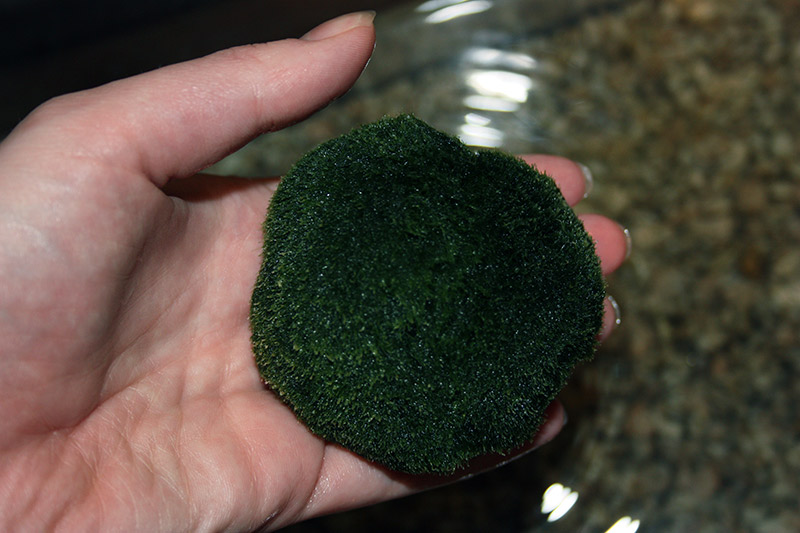
They are slow growing. To get one the size of the largest algae ball at Akan, it would take decades. Even to get to the size of a tennis ball can take years. If you want more, you can just split them in half and reroll them into two little algae babies. Don't worry about hurting them. Just roll them into shape. While they resemble green tribbles, marimo don't reproduce on their own (except for gradually getting bigger) so you'll never find yourself overrun.
And if the thought of looking after a live algae ball is too daunting, there's always the marimo app.
So, that's the marimo. Easily Japan's cutest plant, even if it gave rise to Japan's creepiest mascot. Perhaps it is the simplicity of these soft green spheres that has allowed them to be interpreted in so many ways, much like Hello Kitty's expressionless face. Still, there's something strangely cheering about what is essentially a blob of algae.
Note: The author would like to extend her sincerest apologies for any mental scarring brought on by Marimokkori.
